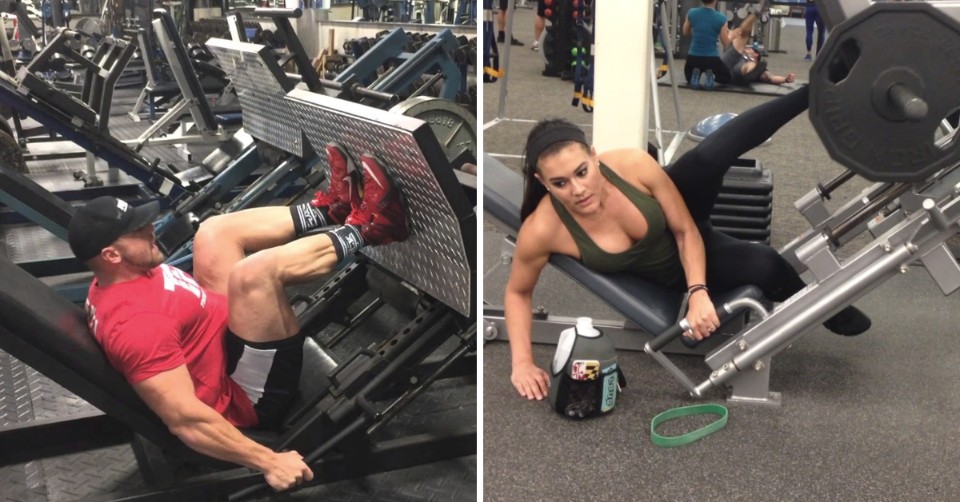You may have performed a hundred kinds of workouts to get in shape, but are you familiar with these kinds of training? Unilateral and Bilateral Lower Body Training.
In this article, we will break down the differences between Unilateral and Bilateral Lower Body Training. It is important to know what kind of exercises we’re dealing with so we could find the best fitness program that suits our body.
For some of us, all it takes in getting the motivation for a tough workout is a pair of shoes, some good music and a sufficient exercise area. However, many require workout accessories to help us. That’s why choosing the best workout accessories will be a big help.

Unilateral Training
You might have done this kind of exercise many times using your one leg or arm. That being so, you’re performing movements that only use one leg or arm in a unilateral training.
For instance, a single leg hip thrust is a unilateral workout. Your lower body will pretty much get the benefits from this kind of training.
According to Mike Boyle, personal trainer and strength coach for Boston University hockey, single-leg exercises are safer and also deliver outstanding results. But as for beginners, performing unilateral training will not be as easy as they could imagine.
As to what Boyle said (via The Nest), it becomes difficult to perform reps with your body weight, for instance, standing up with one leg versus two, without the benefit of two legs. Running through this exercise will give you great results for functional training for living daily life as you become stronger with one leg.
Unilateral Lower Body Exercises
The following unilateral lower body exercises below is courtesy of N1Motion.
- Split Squat
- Single Leg Romanian Dead Lift
- Piston Squat
- Single Leg Glute Bridge
- Lunge Variations
- Single Leg Hip Thrust
- Step Up
- Single Leg Stability Ball Hamstring Curl
- Single Leg Press
- Step Down
- Single Leg Extension
- Single Leg Hamstring Curl

Bilateral Training
This exercise involves the use of both legs symmetrically this time. In the same vein with unilateral, you might have done this kind of exercise yet the mastery of bilateral training is unfamiliar.
Unquestionably, bilateral is much easier to do than unilateral. Simply because you use both sides of your body at the same time with gym equipment.
According to the National Council on Strength and Fitness, performing only bilateral exercise can continue to strengthen one side of your body while hindering the other. Lower-body bilateral exercises include movements in which both feet are on the ground and actively involved with the workout. Via N1motion.
I suggest, if you’re new to the fitness world, it’s better to do the bilateral training since it’s the optimal way to increase your strength and build your baseline stability. Once you are stable using your whole body, you can progress to unilateral exercises.
Bilateral Lower Body Exercises
The following bilateral lower body exercises below is courtesy of N1Motion.
- Squat Variations (Back, Front, Overhead Squats)
- Deadlift
- Romanian Deadlift
- Trap Bar Deadlift
- Clean Variations
- Snatch Variations
- Leg Press
- Leg Extention
- Glute Bridge
- Hip Thrust
- Stability Ball Hamstring Curl
- Glute Ham Extension
- Nordic Leg Curl
How to Implement Unilateral and Bilateral Training into Your Workouts
Both Unilateral and Bilateral lower body training exercises are beneficial whether you are looking to improve your fitness or performance in sports. N1Motion recommendation is to combine both bilateral and unilateral training in the same training session.
Below is an example of a combined bilateral and unilateral lower body training routine. Courtesy of N1Motion.
|
Example 1 |
||
| Bilateral | Back Squat | 3×8-12 |
| Unilateral | Single Leg Romanian Deadlift | 3×8-12 |
| Unilateral | Dumbbell Lunge | 3×8-12 |
| Bilateral | Stability Ball Hamstring Curl | 3×8-12 |
|
Example 2 |
||
| Bilateral | Deadlift | 4×5 |
| Unilateral | Bulgarian Split Squat | 3×6 |
| Bilateral | Nordic Leg Curl | 3×8 |
| Unilateral | Single Leg Hip Thrust | 3×8 |
Unilateral lower body training is great for improving muscle imbalance, kinesthetic awareness, and stability. Whilst Bilateral lower body training is great for improving greater muscle recruitment, strength gains, central nervous system adaptation, hormone response, greater metabolic effect, and requires less coordination.
You can make your own exercise list with Unilateral and Bilateral Lower Body Training on it, as long as it suits your body. We hope that this article will help you to make your workout routine easier and effective.
